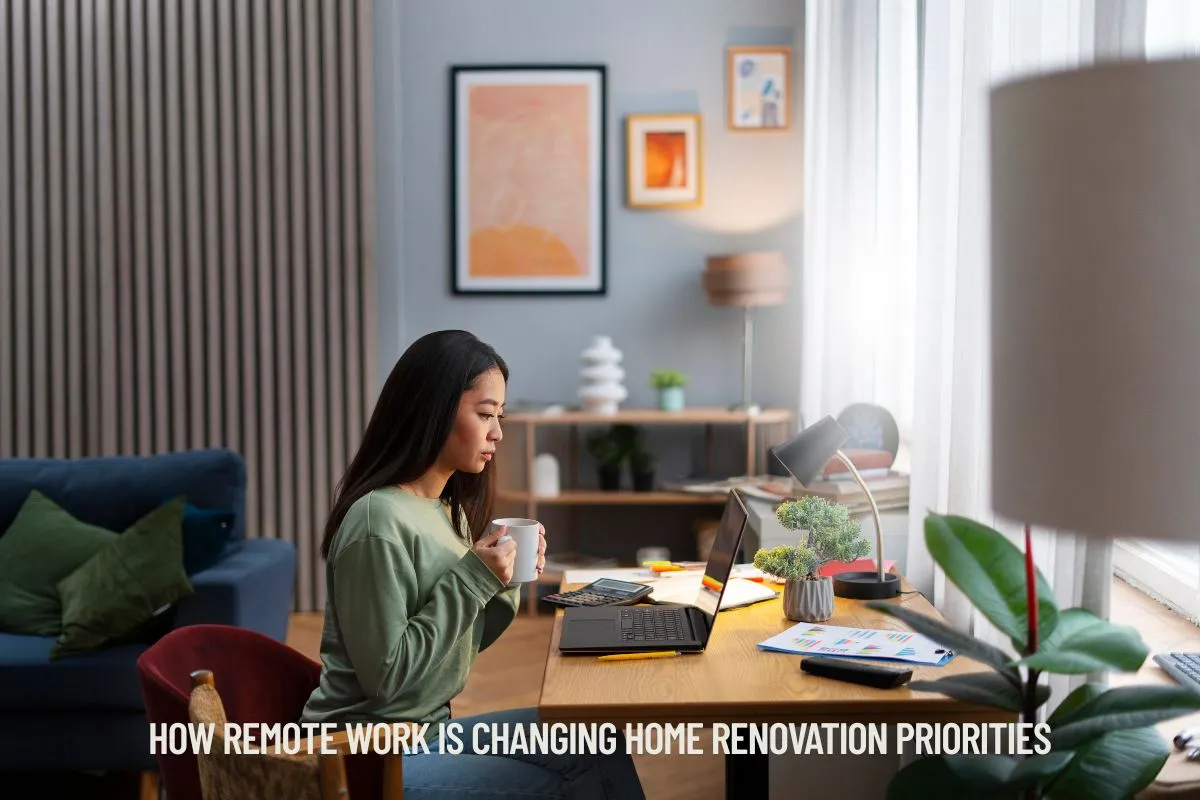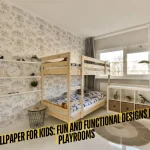Cast your mind back, if you will, to the pre-pandemic days just before 2020. An era where the office commute was very much still a daily occurrence, and the biggest concerns for most homeowners were how close the property was to a decent train line. And whether the kitchen looked nice enough to distract from the questionable wallpaper in the hallway. Ahem.
Fast forward to 2025, and it’s fair to say the world’s had a bit of a rethink. For starters, we’ve moved on from 2019’s coral hues, with Pantone’s tonal experts boldly declaring Mocha Mousse as this year’s colour of the year. Earth shattering as that may be though, the biggest change came courtesy not of interior designers, but rather a global lockdown.
Since then, remote work has gone from a rare perk to commonplace. Over half of all employers now offer remote work, and 40% of British workers currently work remotely. The rise of international hiring (spurred on by services like Remote) also means many UK jobseekers are now seeking full-time positions abroad, performing their roles 100% remotely. Consequently, the way we use — and renovate — our homes has shifted in some surprising ways.
What does all this mean for the nation’s semi-detached, terrace rows, and suburban new builds? Let’s find out.
Spare rooms aren’t so spare any more
If there’s one thing the rise of remote work has done, it’s turn the humble spare bedroom into premium real estate. Once the domain of ironing boards, drying racks and that lockdown-inspired peloton bike, it’s now being rebranded as a “dedicated workspace.”
And it’s not just a desk in a corner anymore. People are soundproofing. They’re investing in ergonomic chairs that cost more than their sofas, case in point: the Herman Miller Aeron; loved by bums and backs, but hated by bank accounts. Some are even building out garden offices — snazzy timber-clad sheds with bi-fold doors and a tasteful fern strategically placed to appear in the corner of every Zoom call.
Tech matters more
Granite worktops and underflow heating is all well and good, but they won’t stop your WiFi from dropping out during a Teams call.
Remote workers are prioritising tech upgrades, which is why we’re seeing a rise in renovations that include things like:
- Hardwired ethernet cabling: Cat6 or Cat7 Ethernet cables are being run behind walls during renovations, with ports installed in key rooms.
- Power & data combos: Wall sockets are being upgraded to include integrated USB and network ports, eliminating the jungle of wires and adaptors under every desk.
- “Futureproofing”: Savvy renovators are adding empty conduits during builds — plastic piping behind walls and under floors to make future cable runs that bit easier.
With more companies hiring in the UK with a remote-first mindset, homebuyers are beginning to expect enterprise-level connectivity in domestic settings.This makes for some pretty bad news for the UK’s slowest street; Morriston Close, in Watford has an average download speed of just 0.6 Mbps. On the other hand, Meadway, Northampton boasts a blistering 896 Mbps, so if you’re on the hunt for a new home office, the Midlands could be your best bet!
Open plan is out (kind of)
There was a time when every home renovation show shouted about knocking down walls and “opening up the space.” It was “light and airy” this, and “blurring boundaries” that.
But now that open plan means listening to your partner’s 9am sales call while you try to respond to emails over the dulcet tones of CBeebies, people are rethinking the whole concept.
We’re seeing a resurgence in demand for broken-plan layouts, sliding doors, and — shock horror — actual walls.We’re still chasing light and openness — but now we want it with a bit of privacy. Turns out, modern living sometimes requires actual, physical boundaries.
Rooms are becoming multi-functional
The days of the single-use room are behind us. That guest bedroom that barely saw action pre-2020? It now serves as a workspace, a workout zone, and a reading nook, depending on the time of day.
Homeowners are renovating with flexibility in mind, stripping out the old “spare room” layout in favour of spaces that can do more. Walls are being reinforced for pull-down beds. Custom cabinetry is swallowing desks and monitors when they’re not in use. Lighting schemes are becoming dynamic — bright for work hours, ambient for evenings — to match the room’s shifting purpose.
Every square metre now has to pull its weight, particularly in smaller properties where space is at a premium. If your renovation plan includes a room that can’t adapt to at least three different functions, you might be doing it wrong.
Home renovation tips for every budget
If you’re not quite ready to knock through walls or lay Cat7 cables through your Victorian terrace, don’t worry. You can still make smart updates to make your home more remote-work friendly.
Low budget (£50 — £500)
You don’t need a full renovation to improve your work-from-home setup. A few clever tweaks can do wonders:
- Add soundproofing strips to internal doors — cheap, easy to install, and brilliant for cutting out hallway noise during meetings.
- Upgrade lighting with daylight LED bulbs or add task lighting near your desk.
- Use rugs and curtains to soften acoustics. Your home will sound less like a cave and more like a studio.
- Invest in decent shelving or a fold-down desk to turn a corner of the room into a credible workspace — no more pretending the dining table is a workdesk.
- Get those snaking wires off the floor and into tidy, professional-looking tracks or organisers. No one wants to work in a spaghetti junction.
Mid budget (£500–£5,000)
Here’s where you can start making meaningful changes without tearing your house apart:
- Create a dedicated work zone by installing a partition wall or sliding door. It doesn’t have to be structural — just enough to signal “work happens here.”
- Install a hardwired Ethernet connection in your main workspace for reliable, high-speed internet.
- Replace a window or add a skylight to boost natural light in your office nook — great for your mood, and your plants.
- Repaint! Lighter shades like soft whites, pale greys, or warm taupes help bounce light and create an open, focused feel.
- Add built-in storage to hide printers, cables, and files. Clutter is the enemy of calm.
High Budget (£5,000+)
Ready to go all-in? Try these tips out for size.
- Build a garden office or studio, complete with insulation, electricity, and wired internet. It’s the closest thing to having a commute without leaving your postcode.
- Convert your loft or garage into a full-fledged workspace, studio, or hybrid guest-office setup.
- Rewire your home to include structured cabling, ceiling-mounted access points, and a central network hub. Especially ideal if your work involves large file transfers, live streaming, or constant video calls.
- Add acoustic insulation to walls and ceilings between rooms — especially if you share your house with children, pets, or particularly loud houseplants.
Like it or lump it — we’re never going back to the days of full-time office work. Remote and hybrid roles are here to stay, so it makes sense to adapt your home as best you can. Head to our home improvement hub for more renovation tips, or pop back to our blog index to view our complete archive of articles. Thanks for reading!










